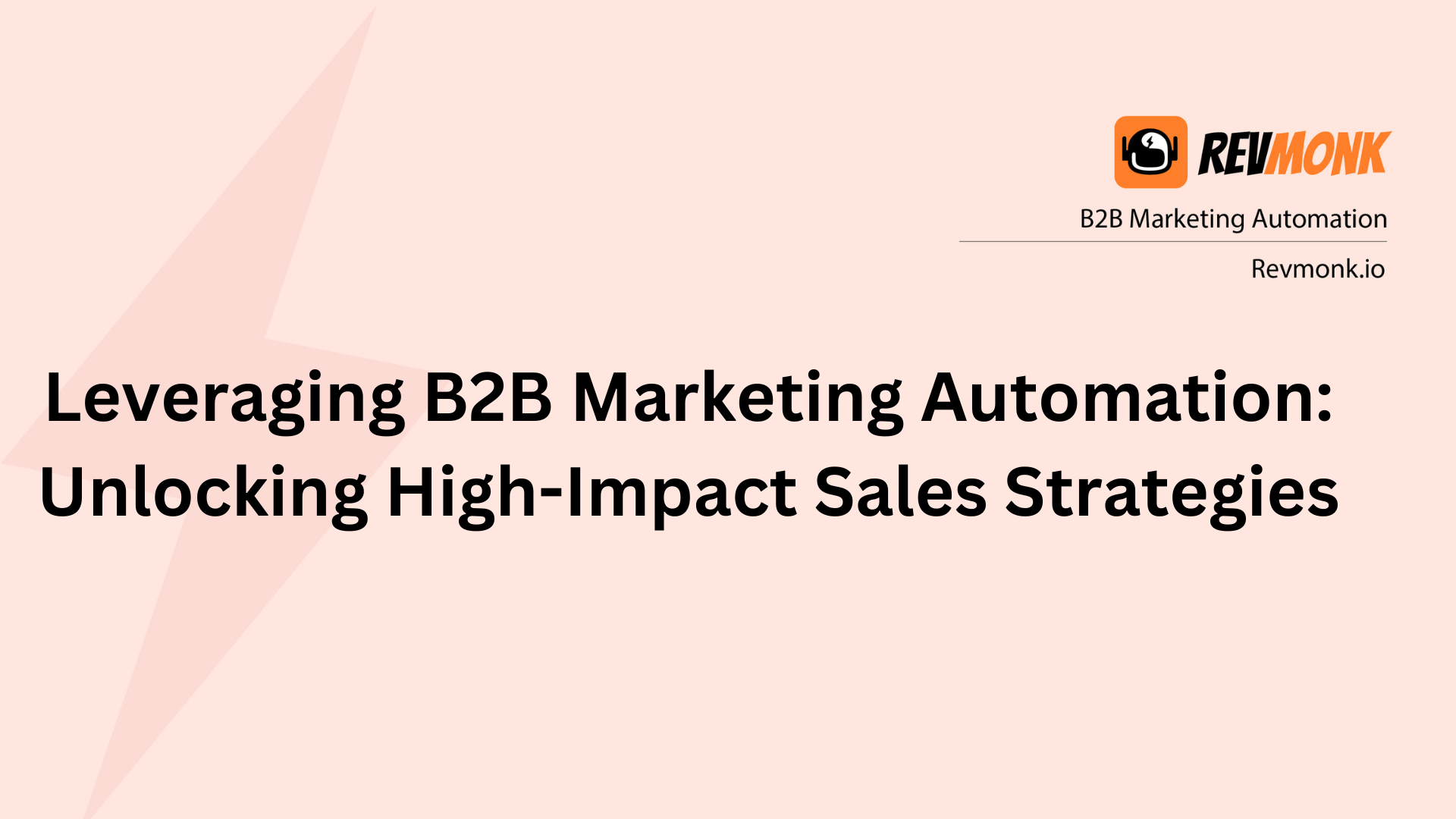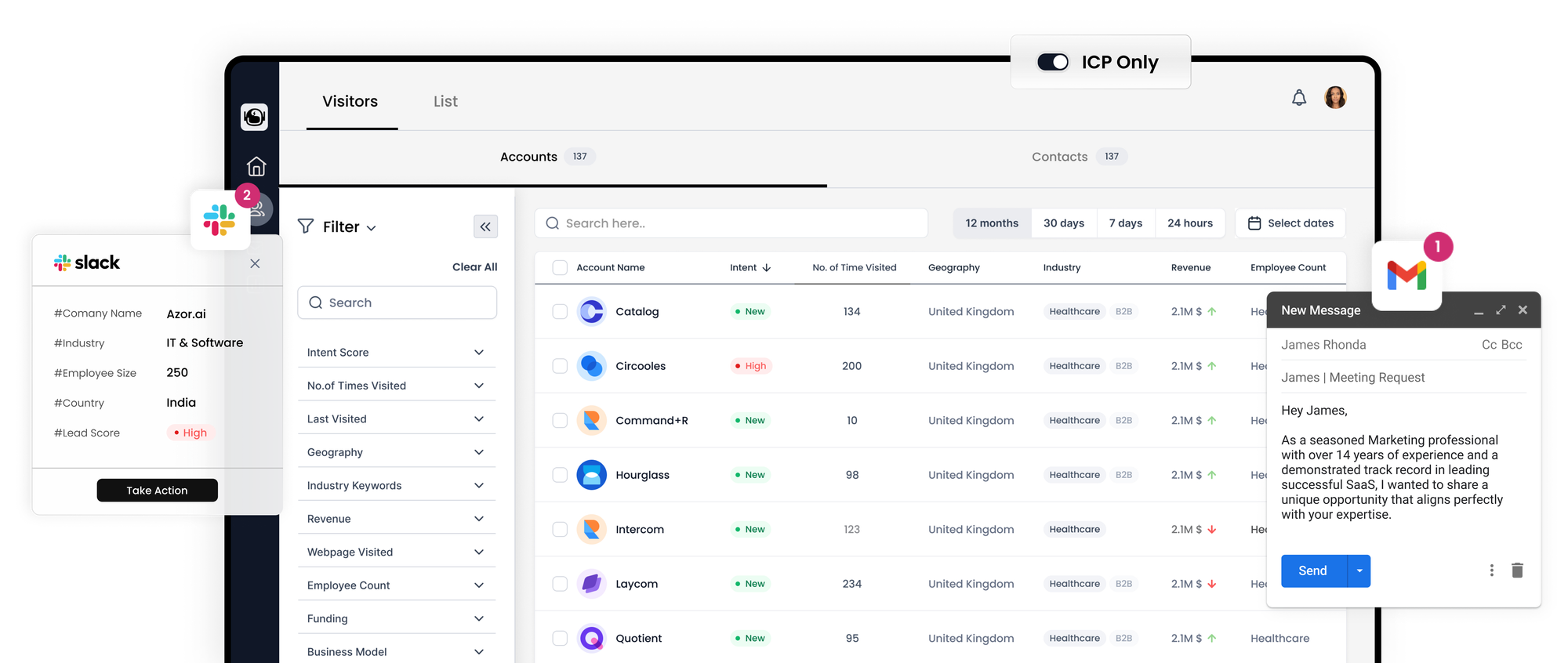Leveraging B2B Marketing Automation: Unlocking High-Impact Sales Strategies

The implementation of successful B2B marketing automation demands meticulous planning and foresight. However, once in motion, it can substantially enhance your sales funnel's efficiency. In this guide, we explore how to harness the power of marketing automation to boost B2B sales and uncover the most effective techniques for nurturing leads.

Distinguishing B2B Marketing Automation from B2C
Before diving into the tactics, it's essential to grasp the distinction between B2B and B2C marketing automation. Both share the core principle of automated messaging in response to subscriber activity, yet their approaches differ significantly.
- B2C centers on personalization, tailoring messages to individual preferences.
- B2B conversely, prioritizes education, guiding leads towards conversion through informative content.
Now, let's delve into five impactful ways to utilize B2B marketing automation:
1. Lead Nurturing
Lead nurturing, a pivotal facet of B2B marketing automation, involves automated email marketing to educate and guide leads through the acquisition cycle. In the B2B landscape, where trust and education are paramount, this tactic shines. After a lead subscribes, provide targeted content until they are warm enough to be handed over to the sales team. Key elements of effective lead nurturing include welcome email sequences, email sequences post-gated content, and if/then/else sequences based on lead activity.
2. Lead Scoring
In the world of B2B, leads need not only nurturing but also qualification. A lead scoring model assigns scores to leads based on their engagement level. Marketing automation can track and assign points to leads when their interactions indicate growing interest. This score can also trigger specific actions, such as tailored emails or list segmentation, facilitating timely engagement with high-quality leads.
3. Multi-Channel Campaigns
Expanding your campaign reach and brand awareness is achievable through multi-channel campaigns. Start with mastering one channel, such as email nurture campaigns, before venturing into multi-channel automation. This approach targets leads through various touch points along the buyer journey, incorporating channels like email, SMS, retargeting ads, and even direct mail to reach a broader audience.
4. Segmentation & Customer Profiling
Segmentation is a powerful tool in B2B marketing automation. It involves categorizing leads based on their activity, engagement, and shared characteristics, enabling more relevant messaging and higher engagement. Automation can streamline list management by automatically moving contacts to specific lists based on various factors like web page visits and email engagement.
5. Page Tracking
Page tracking utilizes website behavior to trigger automated B2B campaigns. It involves monitoring lead interactions on specific landing pages and links, allowing for personalized follow-up with additional information. To implement page tracking, install a tracking code on your website to identify subscriber actions, providing valuable insights for tailored communications.
Best Practices for B2B Marketing Automation
Here are some quick tips to ensure successful B2B marketing automation:
- Map out the lead journey in your sales cycle before configuring automation workflows.
- Craft compelling messaging for each step of the workflow.
- Establish key metrics for monitoring and optimization.
- Maintain 100% opt-in email lists and include unsubscribe options.
- Regularly clean email lists to remove unengaged leads, improving deliverability.
Selecting the Right B2B Marketing Automation Software
When choosing a B2B marketing automation tool, consider your budget and specific needs. Look for features such as multi-channel marketing capabilities, visitor/page tracking, robust reporting and analytics, segmentation options, lead management, and A/B testing. Above all, prioritize software that is intuitive, user-friendly, and capable of delivering timely content marketing.
